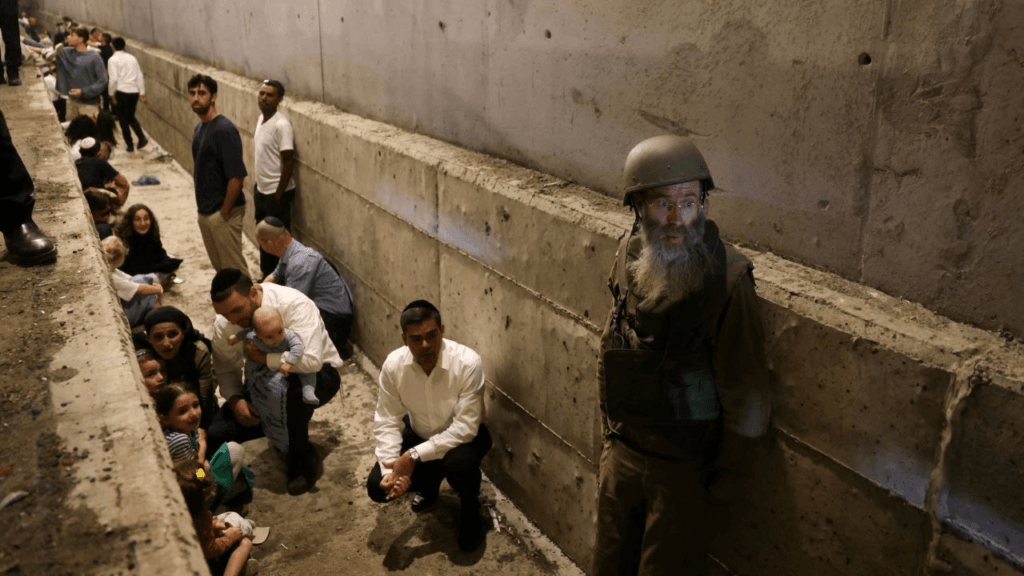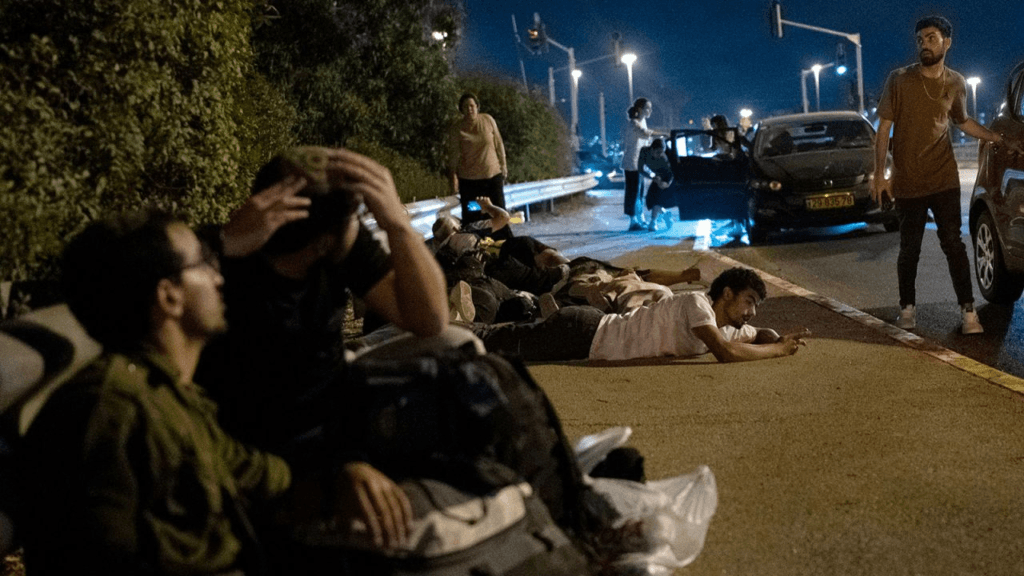
Tensions between Iran and Israel have long been a volatile issue in the Middle East, with both nations involved in a series of direct and indirect confrontations over the years. The latest escalation, marked by missile strikes and retaliatory attacks, has reignited global concern. This article delves into the ongoing conflict, providing an in-depth understanding of the situation, the impact of the attacks, casualties, and the latest updates.
The Iran-Israel Conflict: Background

The tensions between Iran and Israel have deep historical, ideological, and political roots. Iran has never officially recognized Israel as a state, and both nations have long viewed each other as existential threats. Iran’s support for militant groups such as Hezbollah and Hamas, coupled with Israel’s regional dominance and military alliances with Western powers, has fueled continuous animosity.
While both nations have been involved in various proxy wars, such as in Lebanon and Syria, direct confrontations have been rare. However, recent years have seen a more overt military rivalry, including cyberattacks, covert operations, and missile strikes. The most recent escalation involves direct military confrontations, marking one of the most significant flashpoints in the conflict’s history.
Iran’s Attack on Israel: What Happened?

In the most recent incident, Iran launched a series of missile attacks on Israeli targets. These attacks were reported to have targeted military installations and strategic locations across Israel. The strikes came in response to Israel’s ongoing military campaigns in Syria, where it frequently targets Iranian-backed forces. Tensions escalated when Israeli airstrikes hit Iranian assets in Syria, prompting Tehran’s retaliatory action.
How Many Were Killed in the Attack?

As of the latest reports, the death toll from Iran’s missile strikes on Israel remains relatively low compared to previous conflicts. Initial estimates suggest that between 15 to 20 people have been killed, primarily in the targeted military zones. While the Israeli government has not provided detailed casualty reports, it is believed that most of the fatalities were military personnel stationed at the bases targeted by Iran. Civilian casualties, however, have been minimal due to Israel’s advanced air defense system, the Iron Dome, which intercepted several incoming missiles.
Although the Iron Dome successfully prevented many missiles from reaching populated areas, some did manage to hit specific targets, causing damage and fatalities. Emergency response teams were quick to respond to the affected areas, minimizing further loss of life.
Iran Attack on Israel: The Damage
The missile strikes caused significant material damage to both military and civilian infrastructure. The most affected areas were military bases, which suffered direct hits. Several missile defense systems, storage depots, and communication towers were reportedly damaged, hampering Israel’s defense capabilities temporarily.
In addition to the military targets, some residential areas near the attack sites were also affected. Although the Iron Dome intercepted most of the incoming missiles, a few managed to breach the defense shield, causing damage to buildings and vehicles. The extent of the destruction is still being assessed, but preliminary reports indicate that the affected areas will require substantial rebuilding efforts.
The Israeli government has responded by mobilizing its military resources and launching retaliatory strikes on Iranian-backed forces in Syria. In recent years, Israel has developed a strong defense network and sophisticated technology, allowing it to minimize the damage from such attacks. However, this latest incident has highlighted the vulnerability of even advanced defense systems when faced with coordinated and large-scale assaults.
Iran Attack on Israel: The Latest Updates
The situation between Iran and Israel remains highly fluid, with both sides engaging in military operations and diplomatic maneuvering. Here are the most recent updates on the conflict:
- Iranian Retaliation and Diplomatic Tensions: Following the missile strikes, Iran has made clear its intention to continue retaliating against what it describes as Israeli provocations in Syria and elsewhere. Iranian officials have emphasized that the missile attacks were a direct response to Israeli airstrikes on Iranian assets in Syria and warned that future Israeli actions would be met with even more severe consequences.
- Israeli Retaliation: In response to the missile attacks, Israel has launched a series of retaliatory airstrikes on Iranian-backed forces in Syria, targeting military installations, weapons depots, and key infrastructure. Israel’s defense minister warned that further aggression from Iran would be met with even more force, reiterating the country’s stance on defending its national security at all costs.
- International Reactions: The international community has expressed deep concern over the escalation between Iran and Israel. Several Western countries, including the United States and members of the European Union, have called for de-escalation and a return to diplomatic talks. The United Nations has urged both sides to exercise restraint, warning that continued aggression could destabilize the entire region.
- Potential for Broader Conflict: While both Iran and Israel have engaged in limited skirmishes before, this latest attack has raised fears of a broader regional conflict. With Hezbollah in Lebanon, Hamas in Gaza, and various Iranian-backed militias in Syria and Iraq, there is concern that these groups could become more directly involved in the fighting, potentially dragging other nations into the conflict.
The Role of Technology: Iron Dome and Missile Defense
Israel’s Iron Dome defense system has once again proven to be a critical asset in preventing widespread casualties and damage from missile attacks. The Iron Dome is designed to intercept short-range rockets and artillery shells, which are the primary weapons used by groups like Hezbollah and Hamas. During this latest conflict, the Iron Dome successfully intercepted most of the incoming Iranian missiles, significantly reducing the potential for damage.
However, the attack has also highlighted potential weaknesses in Israel’s defense systems. While the Iron Dome is highly effective, it is not foolproof. A few missiles did manage to penetrate the defense shield, leading to some damage and casualties. This has raised questions about the ability of the system to handle sustained and large-scale attacks, especially if Iranian-backed forces in Lebanon and Gaza decide to join the fray.
Iran Attack Israel: What’s Next?
As the situation develops, it is difficult to predict the next steps for both Iran and Israel. The missile attacks mark a significant escalation in the conflict, and both sides are preparing for the possibility of further military action. Israeli officials have stated that they will not tolerate any further attacks on their territory and are prepared to take whatever measures are necessary to defend their country.
For Iran, the attacks serve as both a warning and a demonstration of its military capabilities. While Tehran has made it clear that it does not seek a full-scale war with Israel, it is equally determined to protect its interests in the region, particularly in Syria, where it has invested significant resources in supporting the Assad regime.
Conclusion
The ongoing conflict between Iran and Israel continues to pose a significant threat to regional stability in the Middle East. The latest missile strikes have escalated tensions to new heights, with both sides preparing for further military confrontations. As the situation unfolds, the international community will continue to monitor developments closely, hoping for a peaceful resolution to avoid a broader conflict that could have far-reaching consequences.
In the meantime, the world watches as Iran and Israel continue their dangerous dance, with each side unwilling to back down and the stakes higher than ever. For now, the conflict remains at a critical juncture, with the potential for either escalation or de-escalation depending on the actions of both nations in the coming days.




